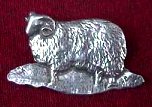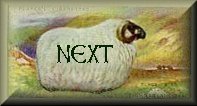HOME | home
Scottish Blackface | Scottish Blackface II | Scottish Blackface III | Scottish Blackface IV | Scottish Blackface VI | Scottish Blackface VII | Scottish Blackface V | Scottish Blackface VIII | Blackface IX | Blackface X | Scottish Blackface Breeders Guild | Blackface Guild 2 | Sheep Shearing | Photo Essay of Blackface | Piebald or Jacob Sheep | Soay Sheep | The Shepherds Bothy
Scottish Blackface V
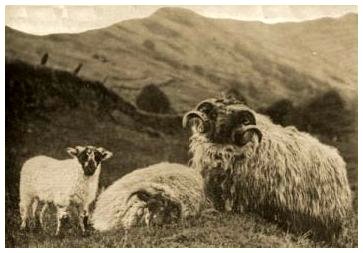
I found this 19th Century information interesting :
God's Treasure-House in Scotland.
by The Rev. J. Moir Porteous.
Minister at Wanlockhead.
1876.
SHEEP AND SHEPHERDS.
The short blackfaced sheep, which fattened from 10 to 14 lbs. per quarter, are the old
residenters found to be best suited to the district. Attempts were made without success to
introduce white-faced, long-bodied sheep of the Bakewell breed. The climate and
coarseness of the pasture, high winds and heavy rains, were thought to be insuperable
difficulties. Now both Cheviot and blackfaced short-woolled sheep are fed ; the Leicester
also, but not upon the hills.
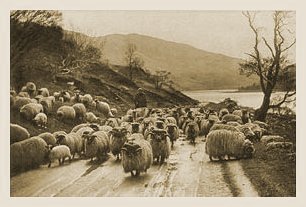
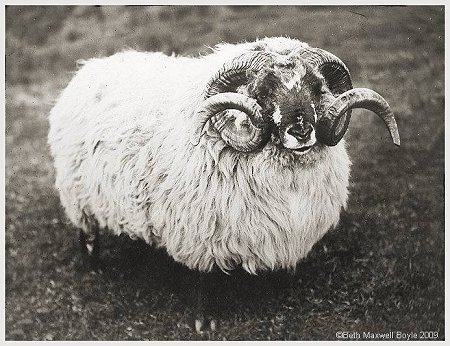 The shepherd is considered "puist," "bien," or well-to-do, having in general a good table. His conditions of servitude are totally dissimilar from those of the farm servant. Four loads of meal and two cows’ grass is a common allowance. Then be may have fifty sheep of his own stock, worth say 20s. each, which, with lambs, share in the fortune of the general sales. It has, however, become customary to give money instead of sheep pasture. But inadequate provision tends to the benefit of neither party. The shepherds’ houses are now much improved. He is also allowed a dog. Generally shepherds are found to be more intelligent, respectable, and respected than some others, and to take a deeper interest in their master’s property. Lectures have been delivered on these hills by a shepherd which would have done no discredit to an LL.D. or D.D. And yet a rougher party can rarely be met with than that of some young shepherds when "whuskied" at a village fair. Then "the drink madness shows the dark beginning of the darker end."The lambing season is perhaps the most anxious and laborious period of shepherd life. In hilly districts it usually begins from the 17th or 18th of April, and lasts for six weeks. During that period the shepherd has a hired assistant or assistants, and the traversing of the hills goes on incessantly from early dawn till late at night. And often he may be seen with a little lamb in the bag slung across his shoulders, which he is carrying either to suckle on cow’s milk at home, or to get attached to a ewe in a little fold, when it has lost its own lamb.The clipping of the sheep is another busy time to the shepherds. (1) That of those termed "eill" or "yell ewes" or "hoggs" begins from the 20th to the 24th June; (2) Cheviots from the 1st July; (3) blackfaced from the 10th or 12th; and (4) milk ewes from the 1st to the 16th of July. The smearing is another important operation. It begins from the 7th or 8th of October. Pouring from the 20th. Dipping is practised at all times. Although dipping is much in use, shepherds in upland districts value the smearing or pouring before it. Without this, in snowstorms the sheep are liable to become "batted up" with drift and frozen snow, which becomes so heavy on their heads and sides as to fix them to a spot. But this does not usually happen, and the sheep are kept warmer when some oil or grease is used.The practice of salving or smearing was thought to improve the quality, to increase the quantity of wool, to preserve , and to defend against attacks of vermin. This last is now regarded as the chief evil to be guarded against, and so dipping in a solution of arsenic, sulphur, juice of broom, tobacco, or other mixture is generally substituted for the tar and butter of former times. Where oil is used, five gallons are counted sufficient for 100 sheep. Shepherds dislike the arsenic, as many have been killed thereby.
THE DISEASES OF SHEEP chiefly arise on marshy ground.
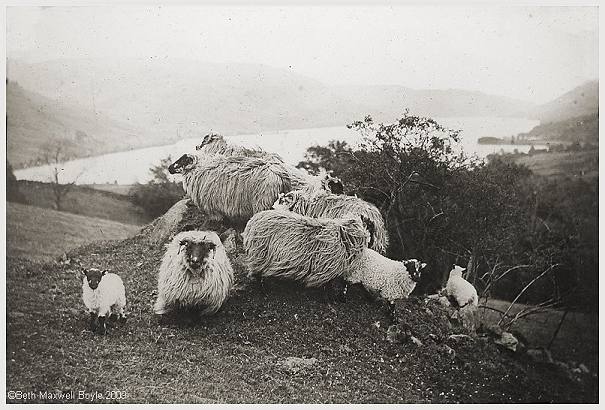 Rot—a bag growing in their necks below the chin, which is found to be full of water. As a preventative, marshy, low lying land would require the drains to be cleaned out every six or seven years.Sturdo, or water in the head, for which the brain is sometimes pierced. Hard winters are supposed to be the chief cause.Braxy, or inflammation, frequently in the bowels, for which the sheep are bled, and the mutton considered a rarity.Trembling, or "the loupin’ ill," from the sheep jumping up when attacked, is frequent on the west side of the Nith, and more sudden. Death in violent cases is immediate. Sheep recover from less virulent attacks by careful treatment.
Mossy land, where, as at the edge of lochs, the grass has not a firm hold of the soil, but which springs up quickly and is eagerly sought after by the sheep, is found to be injurious, much soil being swallowed. So also is the smoke of the lead furnaces, which is seen in the morning lying as dew upon the heather or grass; but the recent smoke-extracting apparatus employed on the Wanlock tends to counteract this evil there.
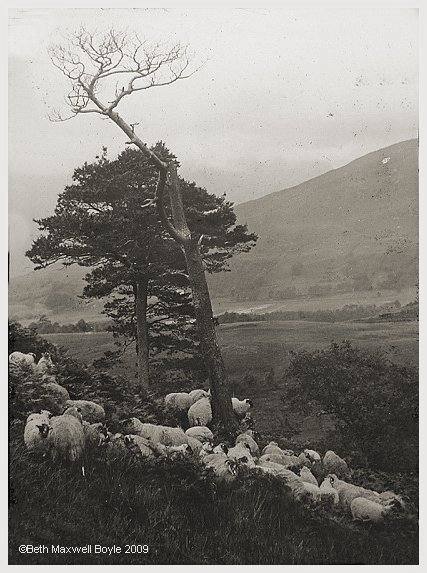 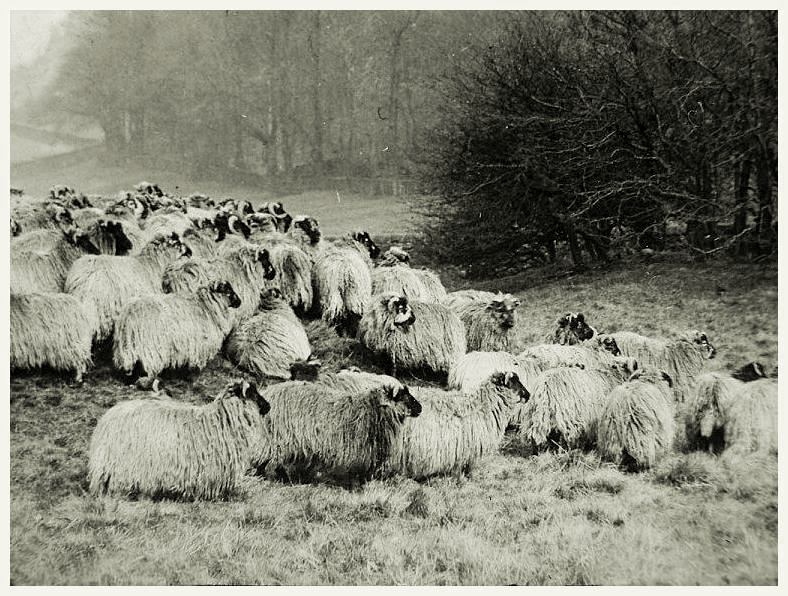 |
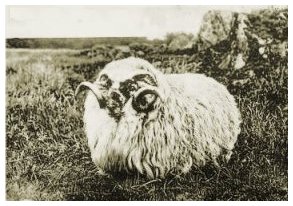
The average price of sheep in 1793 was £8 to £12 per score of three-year-old wedders —
and when kept to Michaelmas, from £6 to £7; lamb, £4, l0s. to £5. At present, Lambs— (1)
Half-bred (from Cheviot ewe and Yorkshire tup), 26s. — a few kept for feeding; (2) cross
(from blackfaced ewe and Yorkshire tup), 22s. — for fatting and killing, not breeding ; (3)
(from Cheviot ewe and tup), ewes, 30s.—lambs, 18s.; (4) blackfaced ewes and tups,
24s.—lambs, 17s. — turned off in sixth year. Wethers (stopped breeding)—(5) Tups (a) Yorkshire, £7; (b) Cheviot, £6; (c) blackfaced, £6.
A History of Times, Mines, and Lands in the Southern Highlands.
Published in London by Simpkin, Marshall + Co., and in Edinburgh and
Glasgow by John Menzies + Co. 1876.
Many Thanks for this material to James Bell
THROUGH THE EYES OF THE PAST:
A HISTORICAL VIEW OF THE PARISHES OF
CRAWFORD & CRAWFORDJOHN, IN
LANARKSHIRE, SCOTLAND
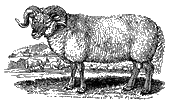 |
Shepherds Crooks USA
copyright 2002 , Jim & Beth Boyle, All Rights Reserved
No part of this website may be used for any purpose ( including using images )
without written consent from The Rams Horn
